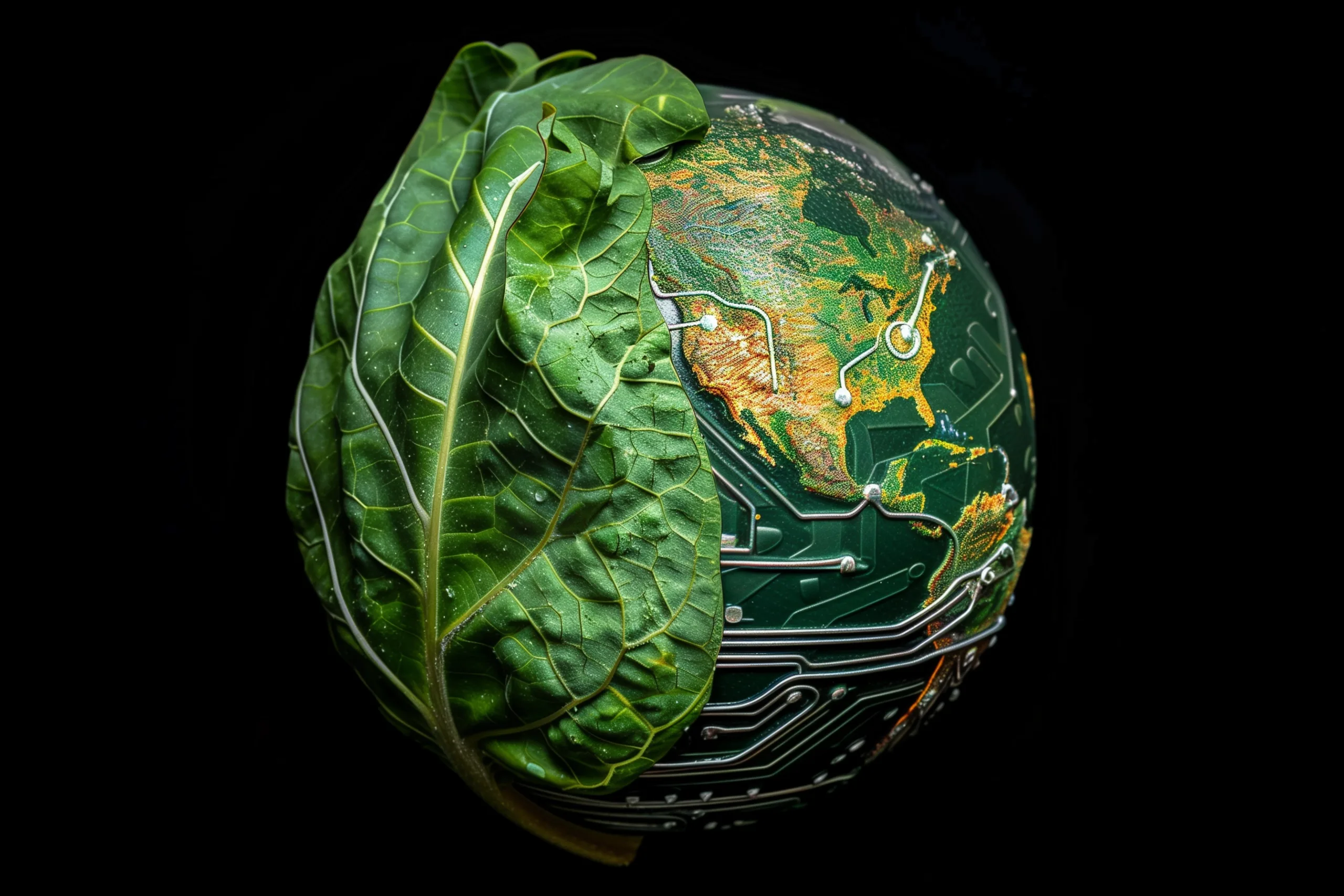published February 9, 2023 | 11 min read
Overfishing is a major environmental issue that affects marine life, ocean ecosystems, and global economies. The problem of overfishing has been around for decades, but it’s becoming increasingly more difficult to manage. In this blog post, we’ll explore why overfishing is a problem, what Artificial Intelligence (AI) can do to help, and how we can all make a difference.

Fishing boat destroying the ocean
The Growing Problem of Overfishing
In addition, overfishing can lead to increased competition among fishing fleets, which can further deplete fish stocks and disrupt the local marine ecosystems. This environmental problem has caused an abundance of species to be threatened and has disrupted the balance of marine life. Technology advancements have made it easy for fleets to locate and overfish certain species, resulting in the large-scale depletion of fish stocks. With the current state of overfishing, it is becoming increasingly difficult to identify solutions that will generate sustainable fishing and restore the damage done to the environment.




increased competition among fishing fleets
Overfishing has caused the widespread depletion of fish populations in the world’s oceans, leading to ecological imbalance and the destruction of natural habitats. In response to this, many countries have turned to state-of-the-art Artificial Intelligence (AI) technologies to not only monitor and track overfishing activities but to also create accurate predictive models that can alert coastal communities and governments to potential threats in time. The advent of AI-powered systems has allowed for the accurate analysis of large datasets and the development of sophisticated algorithms to enable the efficient monitoring of fish populations and detect overfishing in real time. Thus, AI is playing a critical role in helping to protect the planet’s precious marine life from the perils of overfishing.




AI monitoring the fishing population
Besides the current efforts being made to reduce fishing pressure on the world’s oceans, it’s believed that in the future, through advancements in artificial intelligence technology, we could revolutionize our management of ocean resources and restore ecosystems. This technology could also help to better understand complex marine systems, allowing us to make more informed decisions about how to protect vulnerable species and maintain sustainable fisheries for future generations.
Using AI to Monitor Illegal Fishing and Protect Species
AI technology can be used to track boats and flag suspicious activity, helping to identify illegal fishing operations quickly and efficiently. This technology can be used to monitor vast stretches of the ocean to prevent overfishing. It can detect vessels using advanced sensors, automatically alerting authorities of any suspicious activities. By using this technology, it has become much easier to monitor fishing activity, and can be used to reduce the environmental impact of overfishing. In addition, it can be used to collect valuable data that can be used to create sustainable fishing practices.




Using AI to flag suspicious activity
The use of AI could also help protect endangered species from overfishing, by monitoring and preventing the decrease of certain species from fishing grounds. AI algorithms could scan the oceans for signs of overfishing, such as identifying fish populations that have been depleted due to overfishing. The AI would then alert local authorities to take necessary steps to protect the species, such as creating conservation areas or implementing fishing regulations. Additionally, AI could be used to track fishing vessels, ensuring that they adhere to regulations and preventing them from entering restricted fishing areas. This could help to ensure that endangered species are safe from the threat of overfishing, and help to preserve the delicate balance of ocean ecosystems.
AI technology monitoring the fishing boat
In conclusion, it is clear that the use of Artificial Intelligence can be deployed to help protect the environment from overfishing. By collecting data on fish populations and providing actionable insights, AI can greatly enhance our efforts that ensure a healthier ecosystem for years to come. With these AI-driven advancements, we have hope for a future with abundant oceans and thriving wildlife.
Combating Overfishing with Smart Technologies
Smart technologies, such as electronic monitoring devices and vessel tracking systems, can help governments monitor and regulate fishing vessels to prevent overfishing. These high-tech solutions can provide real-time data to identify and track vessels in fishing areas, enabling governments to effectively manage their fisheries and enforce legal limits on catches. Additionally, these futuristic technologies also allow for the analysis of data on fish populations and migratory patterns, which can further assist in understanding the effects of fishing on the environment and promote sustainable fishing practices.




surveillance drone specialized in the fishing population
With these technologies, we can also better understand the impact of overfishing on marine habitats and ecosystems. AI-powered sensors in the ocean constantly monitor fish populations, while drones are deployed as a way of surveying the ocean floor to determine the health of the habitat. This data is then analyzed by powerful computers, allowing us to make more informed decisions on how we can better manage our usage of ocean resources. This helps us make sure that overfishing does not lead to a reduction in the abundance of fish in the oceans, safeguarding the marine ecosystem for generations to come.




Underwater surveillance drone
Also, by harnessing cutting-edge, futuristic technologies and artificial intelligence, we can gain insight into the environmental problem of overfishing that continues to threaten our oceans. With this newfound knowledge, it is up to us to take action and responsibly manage our ocean’s resources so that future generations will be able to enjoy a healthier and more sustainable natural environment for years to come.
AI-driven Solutions to Restore Fish Populations
AI-driven solutions could help monitor fishing activity, allowing for better enforcement of fishing regulations. By using advanced Artificial Intelligence to collect data from satellite imagery, drones, and other monitoring systems, governments could assess the impact of overfishing on the environment. This data could then be used to identify and punish illegal fishing operations, making them less attractive to potential offenders. Thus, with AI-driven solutions, nations around the world could help protect their marine ecosystems more effectively, ensuring a sustainable future for generations to come.




AI software calculating the species population
AI can also be used to predict fish populations and create strategies to restore depleted stocks. With the help of advanced AI technology, scientists can analyze data from overfishing and determine the effects it has on the environment. By using cutting-edge predictive analytics, an AI system can identify the factors that cause overfishing, such as human activity and ocean currents, and create strategies to mitigate them. With the aid of AI, environmental issues caused by overfishing can be addressed in a timely and effective manner, allowing us to restore depleted fish populations and protect the environment.




AI software mapping the ocean population
Next, Artificial Intelligence will be the key tool to help solve the environmental problem of overfishing. Utilizing AI for this purpose allows for detailed mapping of ocean life, providing a more accurate and in-depth view of marine ecosystems to help inform sustainable fishing practices that protect them. With this technology, we will be able to take actionable steps toward preserving our marine environments for future generations before it is too late.
The Role of Education in Preserving Aquatic Ecosystems
Education is essential in raising awareness of the importance of preserving aquatic ecosystems and the hazards of overfishing. With advances in artificial intelligence, it is now possible to monitor and regulate fishing operations in real time, allowing for better enforcement of sustainable fishing practices. The use of AI-driven drones for patrolling fishing areas is also proving to be an effective way to monitor and discourage unsustainable fishing activities. As a result, the implementation of such technologies is essential for the conservation of our oceans and aquatic ecosystems, and more fish are now reaching their intended habitats. The future of our aquatic ecosystems is in our hands, and together, we can ensure a healthy future for our planet and its oceans.




The ocean world is in our heands
By teaching people about sustainable fishing practices and the need for conservation, we can help ensure that these habitats remain healthy for years to come. With the rapid advancement of technology, it has become easier to identify areas of overfishing and to create more eco-friendly regulations that can help restore the balance of our ecosystems. By implementing these regulations, we can reduce the amount of overfishing and in turn, protect the habitats that are essential to our planet’s health. By educating the public on the importance of sustainability, we can help to ensure that our environment is kept healthy and safe for generations to come.
However, the future of our aquatic ecosystems lies in the hands of innovative technologies and methodologies that may be able to replenish the oceans, prevent overfishing and enable a more environmentally responsible form of aquaculture. Through strategic artificial intelligence solutions, we can be sure that future generations will benefit from a healthier aquatic environment. Harnessing futuristic technology for environmental protection may also help to ensure equitable access to limited resources for all people across the globe.









